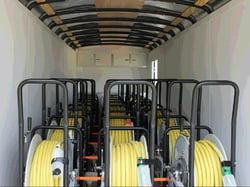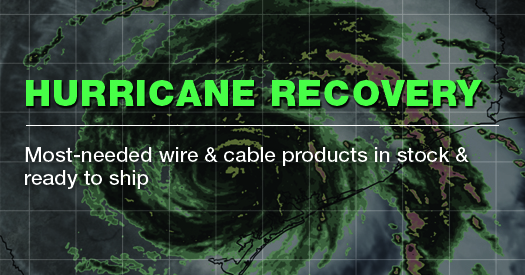WHY HAVE AN EMERGENCY OPERATIONS PLAN?
 If we've learned anything from recent events, having an operations plan in case of an emergency plays a very important role in keeping your facility up and running and your people safe. Your plan can provide guidance to employees during an emergency and highlight potential issues in your facility, such as hazardous conditions and a lack of resources, that you may be able to fix prior to an emergency happening.
If we've learned anything from recent events, having an operations plan in case of an emergency plays a very important role in keeping your facility up and running and your people safe. Your plan can provide guidance to employees during an emergency and highlight potential issues in your facility, such as hazardous conditions and a lack of resources, that you may be able to fix prior to an emergency happening.
IDENTIFYING YOUR OBJECTIVES
Setting clear objectives and purpose for your plan will help to carry out four main interrelated actions: mitigation, preparedness, response and recovery. This systematic approach will minimize the overall impact of an emergency. Additionally, include several groups of people in this stage of the planning process to prepare a more comprehensive plan that will include every part of the organization.
Common Emergency Planning Objectives:
- Prevent injuries and fatalities
- Resuming normal facility operations
- Reduce damage to facilities and equipment
- Protect the community and environment
PLANNING FOR TECHNOLOGICAL & NATURAL DISASTERS, EVENTS & ACTIONS
The "hazards, then actions, then resources" sequence will aid in identifying many considerations for your plan.
Common Technological & Natural Hazards:
- Fire & explosion
- Building collapse & structural failure
- Toxic & flammable substance spillage (accidental & deliberate)
- Terrorist activities
- Radiation & nuclear waste exposure
- Loss of electrical power, water supply and/or communications
- Floods, earthquakes, tornadoes, hurricanes, tsunamis, wind storms, snow/ice storms, extreme temperatures (hot & cold)
- Pandemic diseases
Common Events & Decisions to Consider:
HAZARDS: Sequential events, casualties, evacuation, facility & equipment damage of any kind, loss of records & disruption of work (downtime).
ACTIONS: Attend to casualties and injuries, declare emergency, sound an alert, close main shut-offs, call for external aid, deploy your own temporary power, initiate rescue operations & fight fire
RESOURCES NEEDED: Trained personnel, medical supplies, power generators or deployable power, auxiliary communication equipment, respirators, chemical & radiation detection equipment, mobile equipment, protective clothing, ambulance & rescue equipment.
COORDINATING YOUR ORGANIZATION & FOLLOWING PROCEDURES
To successfully carry out a disaster preparedness plan, make sure that more than one individual is qualified and trained to execute the plan in case the original coordinator is not able to do so. When appointing plan leaders, be very specific in describing their authority, responsibilities and what resources they will need to follow through with their part of the plan.
Common Emergency Plan Responsibilities:
- Reporting the emergency & activating the plan
- Assuming command & communications
- Alerting staff, external agencies, outside at-risk population, media outlets and any relatives of casualties
- Ordering evacuation & confirming completeness
- Coordinating activities & groups of people
- Providing medical aid
- Ensuring emergency shut-offs are closed
- Deploying back up electrical power
- Sounding an all-clear
Common Factors Used To Determine Procedures:
- Nature & degree of emergency
- Size & capabilities of organization
- Outside aid availability
- Physical layout of facilities
Common Elements To Consider For Procedures:
- Pre-emergency preparation & provisions
- Alerting & evacuating staff
- Handing casualties, missing persons & injuries
- Containing any danger
- Advantages of prior-warnings (like with natural disasters)
- Identifying evacuation order, routes, means of escape and keeping them unobstructed
- Alternate sources of medical treatment
- Prioritizing the severity of danger(s)
DELEGATING & TESTING YOUR PLAN
After the plan has been thoroughly worked out and written down, delegate parts of the plan to all appropriate groups of people throughout your organization. Prepare the groups for exercises and drills to test your plan. Testing your plan will help everyone to better understand their roles as well as identify additional predictions of possible emergency situations and outcomes. Reviewing and testing the plan on an annual or bi-annual basis is ideal for keeping the plan updated with any new processes, changes, personnel and materials used.
Disaster preparedness shows your commitment to the safety of your people as well as promotes safety awareness (in general). Having an "it can't happen here" outlook puts your people and facilities at risk for an organizational collapse. In the event you need help with cable or temporary power storage, we're ready to help with the most-needed products, in stock & ready to ship.



